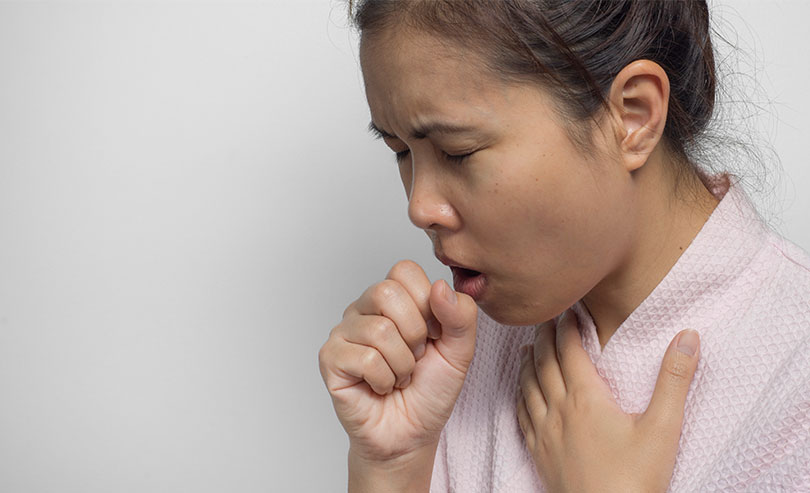Different Types of Asthma and How they Affect People
Asthma is a chronic lung disease that causes bronchoconstriction or narrowing of the airways along with inflammation. According to the American Lung Association, about 26 million people have asthma in the United States. Symptoms of asthma can vary in severity, but they include shortness of breath, wheezing and chest tightness.
There is no cure for asthma, but treatments are available that treat sudden symptoms and prevent flare-ups. The course of asthma is not the same for everyone and different forms of the disease exist. Although treatment may be similar, there might be some differences in how your asthma is managed based on the type you have.
Asthma Types
According to the American College of Allergy, Asthma, and Immunology, there are several types of asthma. It is also possible to have more than one form. Below are the most common types of asthma.
Allergic Asthma
People that have allergic asthma are sensitive to particular allergens. According to the Asthma and Allergy Foundation of American, allergic asthma is the most common form of the disease.
Allergens are substances that are typically harmless, but the body views the allergen as dangerous, which triggers an immune system response. The allergic reaction leads to asthma symptoms. Common allergens that may trigger allergic asthma include pet dander, pollen and mold.
Symptoms of allergic asthma include:
- Wheezing
- Coughing, especially at night
- Trouble breathing
Symptoms may start as soon as a person comes in contact with the allergen. If you have allergic asthma, you need to work closely with an allergist to find your triggers. Once you know your allergens, allergy shots may help you become less sensitive to triggers and decrease asthma symptoms.
Nonallergic Asthma
Nonallergic asthma involves asthma symptoms that are not triggered by allergens. Instead, symptoms may be caused by other factors. For instance, cold weather or stress may trigger symptoms in people that have nonallergic asthma. Symptoms of nonallergic asthma are the same as allergic asthma. It may not be as easy to identify triggers in people that have nonallergic asthma, but it is still vital to determine the cause to develop a treatment plan.
Adult-onset
Asthma often develops in childhood, but adult-onset asthma occurs at some point in adulthood. The cause of adult-onset asthma is not fully known. One theory is that adult-onset asthma may be allergic asthma, but the allergen was avoided during childhood. For example, someone may move somewhere with higher levels of pollen. Adult-onset asthma may also be triggered by a significant respiratory infection. Symptoms of adult-onset asthma include:
- A dry cough
- Wheezing
- Chest pressure
Symptoms of adult-onset asthma can be more severe than childhood asthma. According to the Cleveland Clinic, the death rate for adult-onset asthma is higher than childhood asthma.
There are different subtypes of asthma based on the cause, and allergy-induced asthma is one of the most common forms of asthma.
Exercise-induced
Exercise does not cause asthma, but exercise may trigger asthma in people that have exercise-induced asthma. What happens is exercise leads to constriction of the airways triggering symptoms. Symptoms of exercise-induced asthma include:
- Coughing
- Decreased exercise endurance
- Chest tightness
- Shortness of breath
Usually, exercise-induced asthma may start several minutes into exercise and can worsen about 10 minutes after exercise has stopped.
Occupational Asthma
According to the Occupational Health and Safety Administration, two million people in the United States have work-related or occupational asthma. Occupational asthma involves exposures to irritants or allergens at work. Typical triggers include fumes, dust and paints.
People that work around dust, chemical fumes, or soil may be at an increased risk of developing occupational asthma. For example, farmers, metal workers and plastics workers are at risk of developing work-related asthma.
If you have occupational asthma, it may take months to develop symptoms. In other cases, exposure to an allergen may lead to symptoms within a day, depending on the concentration of the irritant.
Symptoms of occupational asthma are the same as other forms of asthma and include:
- Breathlessness
- Chest pressure
- Coughing with or without mucus
How to Get a Proper Diagnosis
Different types of asthma tend to have the same symptoms, so it can sometimes be challenging to determine the form, but getting a correct diagnosis is important to develop the best asthma action plan. Different forms of asthma may require slightly different treatment. It is also vital to know what triggers symptoms.
To make a diagnosis, your doctor will perform a physical exam and take a medical history. She will try to determine when symptoms develop. Your doctor will ask questions, such as how often symptoms develop and what activities you were doing when they started. It may also help to perform the following.
Allergy Tests
Allergy tests involve injecting a small amount of a suspected allergen into the skin to determine if there is a response. Allergy tests can help find specific triggers leading to asthma symptoms.
Spirometry
Spirometry is a series of breathing tests that measure lung function. The test will not determine the exact type of asthma, but it may help measure the severity.







